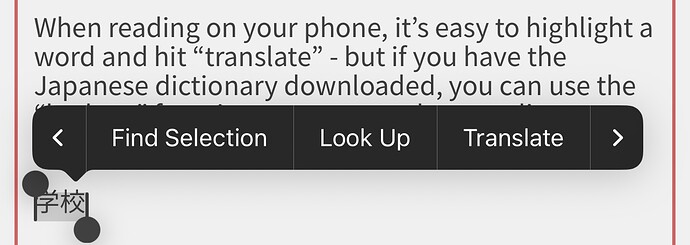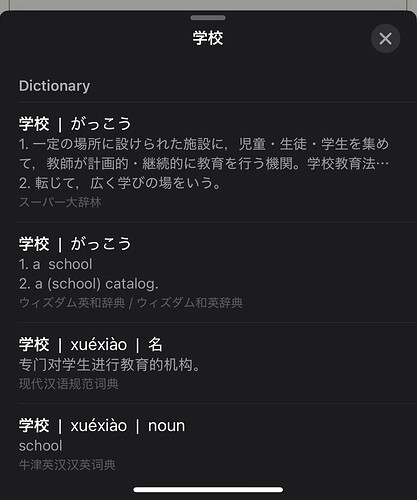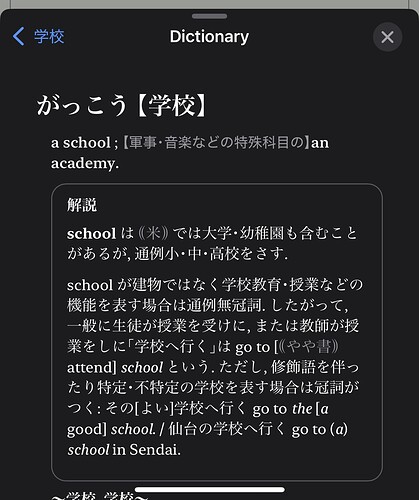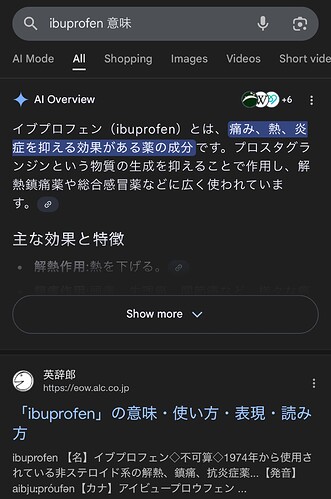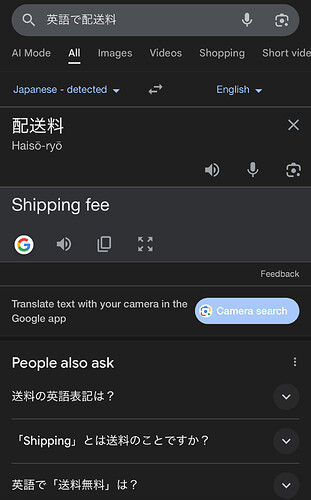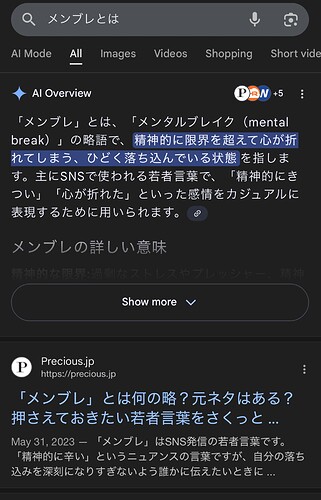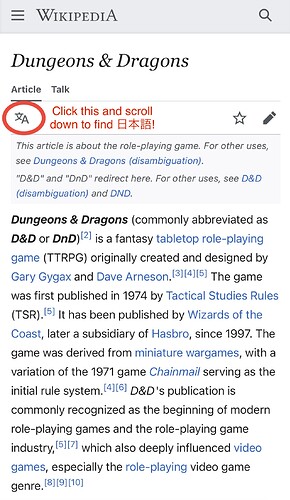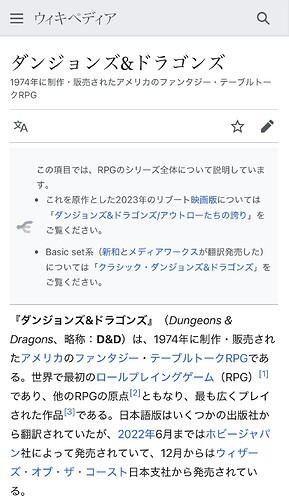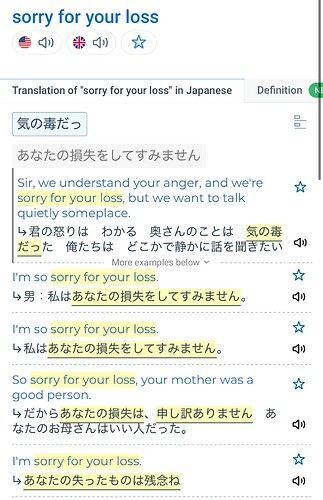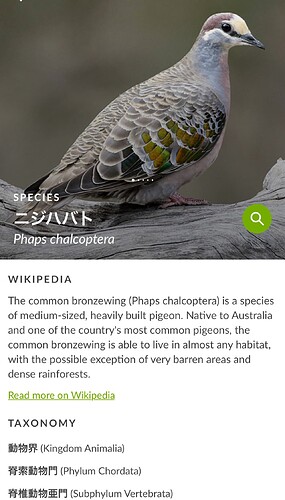Hello! I’ve been thinking about this recently, so I thought I’d share some uncommon study tips that I follow. By no means are these the only study tips you should follow - just some supplemental ones I find useful.
1. Mobile “Look Up” Function
When reading on your phone, it’s easy to highlight a word and hit “translate” - but if you have the Japanese dictionary downloaded, you can use the “look up” function to see not only a word’s translation, but an explanation in Japanese.
(Note: I use iPhone. I don’t know if this is a function on other phones.)
2. Internet Searches
When I want go know either a word’s meaning in English or a good match in Japanese, I take it to internet searching - using Japanese phrases to see what I want.
Here’s some phrases I often use:
(word)とは (“what is (word)?”)
(word)意味 (いみ - “meaning of (word)”)
(word)英語で/日本語で (えいごで/にほんごで - “(word) in English/in Japanese”)
Depending on if the word is in Japanese or English originally, you’ll get different results, but I find it very useful especially to check contextually if something is correct, or what people in the current day are thinking of in context - and sometimes the related search questions will elucidate things further than Google translate or Jisho on their own.
3. Online Articles + Wikipedia
If I’m interested in a topic, sometimes I’ll get my Japanese reading in by checking to see if the Wikipedia page has a translation. I find this is a great way to learn subject specific words and explanations.
I also recommend looking up topics in Japanese and finding online articles about them.
4. Children’s Resources + Curriculum
Ever study and think, “I wonder what it would be like to learn Japanese like the kids in Japan do”? Well, while it’s a little hard to do, you are in some luck - MEXT (the Ministry of Education, Culture, Sports, Science, and Technology - or 文部科学省 (もんぶかがくしょう)) has official curriculum lists and you can purchase official textbooks.
Here’s a list of textbooks, and here is a textbook database search.
While sourcing these books can be annoying, I’ve had some luck with book stores, Amazon, or websites like this one - but I warn you that this option may only be available in Japan. Sorry!
However, official textbooks are not the only source of educational material aimed at Japanese schoolchildren. For example, try searching 小学生向け (しょうがくせいむけ - “aimed at elementary students”) for example - you’ll find a lot of free materials meant to supplement children’s educations. I like this website a lot - they have a ton of educational prints and quizzes and so forth. If you remove the “syogaku.html” also, you’ll see things aimed at other schooling levels, too.
5. Reverso Context
Reverso Context is a website which does probably what you expect - if you input a word or phrase, it will show you examples of what you type in with both original and translated text. It’s not always perfect, but it can help a lot to get an idea of what something is in context or what other people may say in a situation.
Maybe I need to write a quick email to someone whose family member passed away. Rather than trying to find something in a dictionary or hoping Google Translate knows what I’m talking about, I can get a good idea from this search that there are a few different ways to say that, and I can look into them from there to see which fits best. (Of course some of these you can just Google - but I found this site really useful for when I was writing job application letters and had industry specific phrases I was trying to use.)
6. iNaturalist
If you were like me and your mom used Animal Planet instead of a babysitter, you may be always interested in what animals are called in Japanese - and what their more scientific names are. Setting your region/language to Japanese on iNaturalist or other sites will give you specifics that many native speakers might not even know. (I’ve impressed my Japanese boss with my knowledge of Japanese insect names a few times. No, I can’t quite use keigo correctly, but I know about bugs and flowers. And isn’t that what really counts?)
A very special mention to MushiNavi here as well. I now can describe the Red Horned Stinkbug in Japanese.
7. Yahoo Answers
It still lives in Japan! It doesn’t always give the most legitimate answers on actual questions, since it’s user submitted, but it’s a great way to see what Japanese people are saying about things and what vocabulary they use.
——
Are all of these things extremely useful? Maybe not. But by using them, I get more exposure to native Japanese phrases, word usage, and information, which I find helps connect what I learn to real things and puts them into my memory more concretely.
How about you? Anyone else have some uncommon or unconventional study tools or techniques you rarely see?

